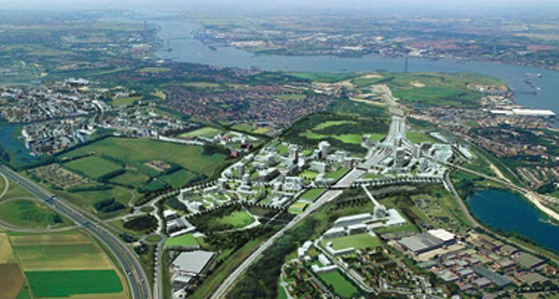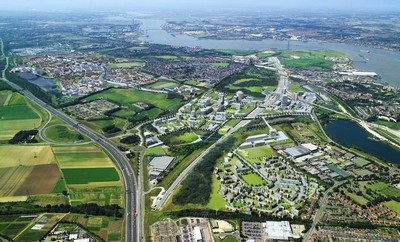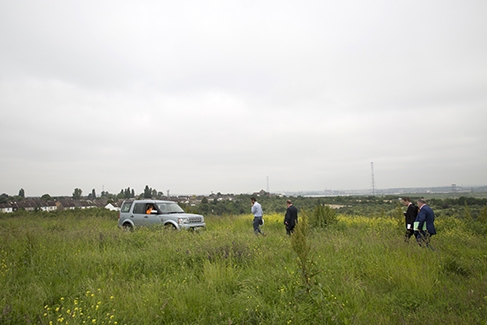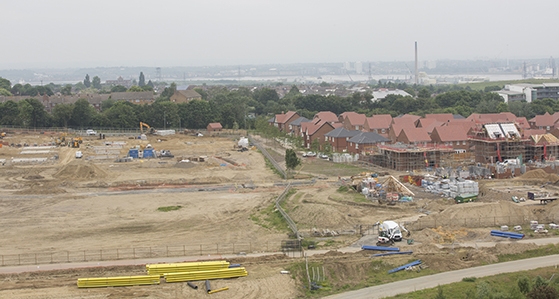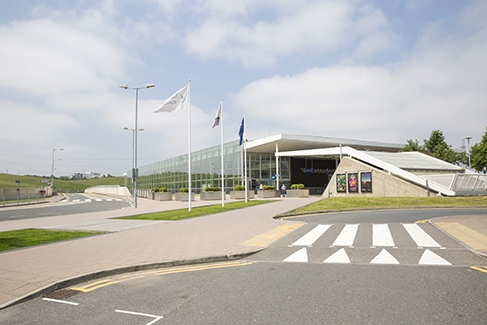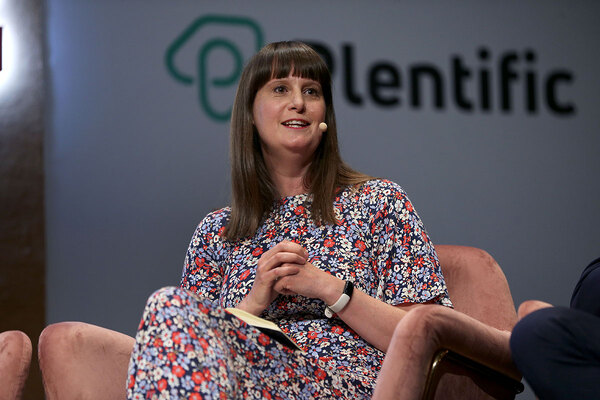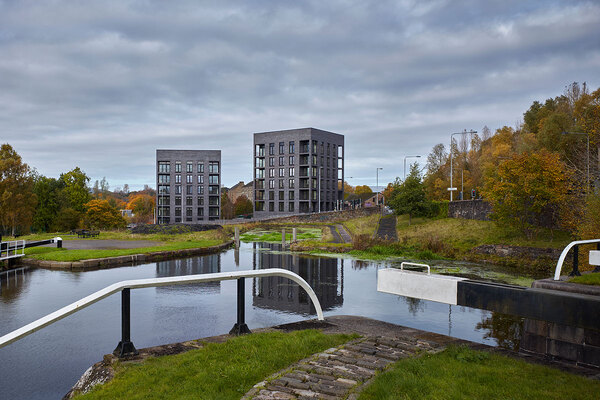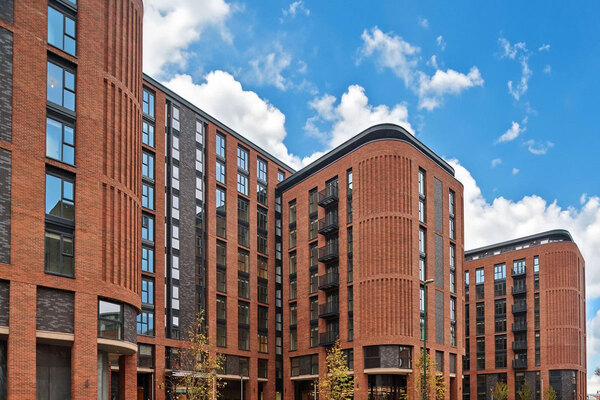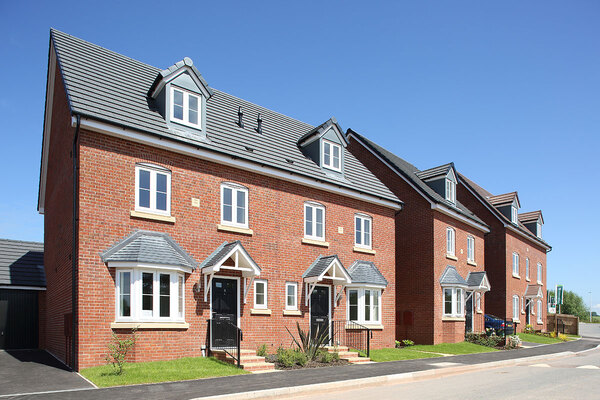You are viewing 1 of your 1 free articles
Building the new garden city
The new city planned for Ebbsfleet has been dogged by delays - but is it finally beginning to blossom? Pete Apps reports
Video:
features code
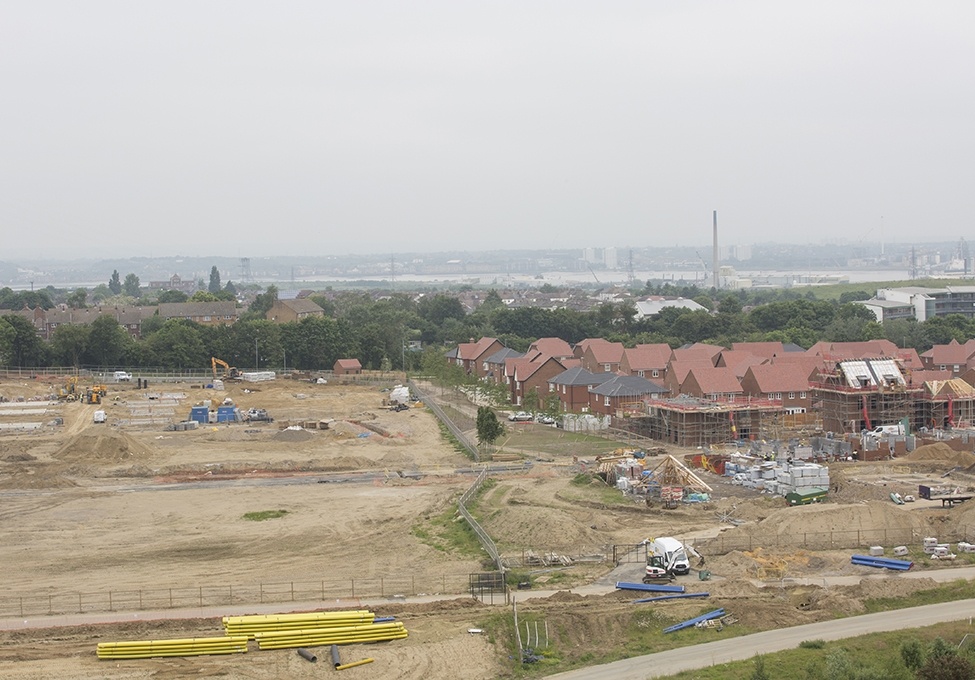
Inside Housing’s visit to Ebbsfleet begins with a trip in a 4x4. “Hold on to your coffees,” says our driver Graham as we pull away. “This is going to be a bumpy ride.”
“This is going to be our Primrose Hill.”
Kevin McGeough, head of place-making, Ebbsfleet Development Corporation
So bumpy in fact that on a similar expedition by the Ebbsfleet Development Corporation’s (EDC) board a couple of weeks ago, one of the Land Rovers got stuck in a hole.
But our vehicle makes it safely to the top of a hill with sweeping views across Kent and the Thames Estuary.
“This is going to be our Primrose Hill,” says Kevin McGeough, head of place-making for the EDC, gazing over the scrubby grassland on top of the landfill from a long-closed chalk mine, which he hopes will be the central park of a 15,000-home modern garden city.
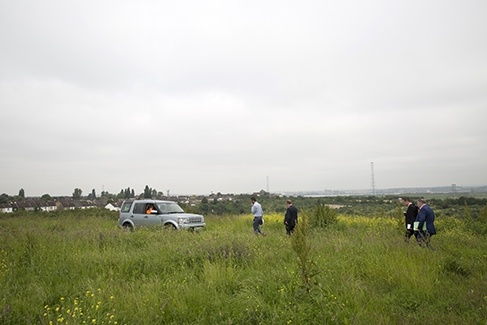
A meadow proposed for a public park, overlooking the Thames
This is the dream. But in Ebbsfleet, dreams have been a long time coming. Planning permission for a major residential development was first granted in 2002. And it is two years since the government first announced headline plans to build a garden city here.
As of 3 June this year, just 420 of these homes - 2.8% of the planned total - had actually been built. To a sceptical media hungry for white elephant stories, this slow progress suggested failure. An in-depth Guardian piece in January said the project was “struggling to take root”. The Mail Online lifted many of these quotes and re-jigged them to claim the project had been “scrapped”.
Video:
Ad slot
But after many years of struggle Ebbsfleet’s roots have started to bed in, and shoots are coming through. Inside Housing boarded the 12-minute high-speed train from Stratford International to find out more.
A couple of weeks before the visit, EDC’s board signed off plans to lift development on the site to 1,000 per year from 2017/18 onwards. To put this in context, it means 20 a week or three a day, every day, from now on. This level of development is remarkably ambitious, but there are signs of progress.
What will be the garden city is made up of three distinct sites - Ebbsfleet Central around the station, where 5,000 of the homes are planned; the Eastern Quarry and Castle Hill area, which will be made up of more than 6,250 homes; and Northfleet Riverfront towards Gravesend, which will host 1,250 homes.
Site sales
Much of this land is owned by FTSE 100 commercial property firm Land Securities. In April, it announced the sale of a slew of sites - with buyers Taylor Wimpey, Ward Homes, Persimmon, Countryside and Redrow all now onsite down in the Eastern Quarry, where the bulk of the homes will be built.
“The big question is whether the market will absorb homes in that region at that rate.”
Adam Challis, head of residential research, JLL
From an observation platform, diggers and workmen can be seen trundling back and forth between sites in the vast quarry, and a village of a few hundred homes has already been raised from the ground in the eastern corner.
“In terms of developing out the whole quarry it is going to be 10 to 15 years,” says Simon Harrison, head of design at the EDC. “By 2021 there will be 5,000 and by 2026 there will be 11,000 homes in Ebbsfleet, which will include most of the quarry.”
Having so many builders onsite is part of the EDC’s plan to ensure the delivery of Ebbsfleet meets its ambitious target pace of 1,000 a year. In other large developments, a commonly cited reason for slow delivery is house builders drip feeding properties into the market, based on conservative assumptions about the rate of sale.
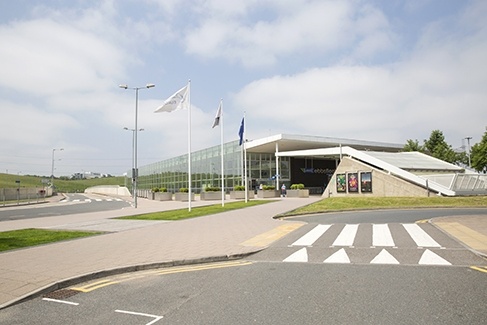
Ebbsfleet train station will have its huge car park rebuilt
“The plan is to get 15 sales outlets going across the city at one time,” says Mr McGeough. “That drives competition, so you keep the rates of development up.”
This sounds good on paper - but can it work? Adam Challis, head of residential research at property consultancy JLL and involved in Ebbsfleet at an earlier stage in a previous job, is sceptical.
“I think 1,000 homes per year is a really big delivery quantum. The big question is whether the market will absorb homes in that region at that rate. I wouldn’t like to say its impossible, but it becomes pretty challenging,” he says.
“We’re not trying to rebuild [historic garden city] Letchworth, we’re doing it our own way.”
Kevin McGeough, head of place-making, Ebbsfleet Development Corporation
“If you are dividing up between builders who are giving similar products, it just divides up the existing demand. Having multiple outlets can help but only if the products are sufficiently differentiated.”
The EDC is confident though. Mr McGeough confides that one of the builders has received 7,000 expressions of interest for its current development of a couple of hundred homes.
“There is demand to live here, there’s no doubt about that - even in the early stages. People know the values are going to rise so it’s worth getting in early, even though there are going to be building sites around for the first few years,” he says.
But surely this demand has been present, at least since 2007 when the high-speed trains started shuttling people to central London in less time than most people sit on the tube in the morning - so what has slowed development? The answer is finance.
“The drainage in the quarry site is quite complex, there is a lot of work to pump out water and you have to keep pumping it out,” says Mr McGeough. “The fact that it has not come forward [yet] shows the viability has always been very marginal.”
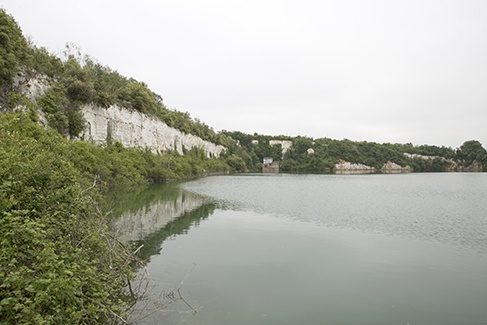
The white cliffs of Ebbsfleet
Mr Challis agrees: “Ultimately it’s a scheme that requires quite high-density delivery to justify the very large upfront spend on infrastructure. If you can’t deliver the place to drive values, then you can’t drive the values to deliver the place. The plans are deliverable but it’s hugely complex and risky.”
This is where the EDC comes in. More specifically, it is where £310m of Treasury cash comes in - announced by George Osborne in December - which the EDC will distribute.
EDC needs to decide how to use this funding. The Treasury wants it to be recovered, so much has to be loaned out. The cash has only just made it to EDC, with £39.1m available this year. The corporation has to go to government to sign off each chunk of spend - but it gives EDC a lot of options.
The early priority is to sort out utility connections - a major sticking point historically - this year. But as Housing Zones cash in London has demonstrated, flexibility can breed success.
“We are working with each of the landowners to see what the key issues are - they might tell us they need a new bridge to link the sites, and we can provide that. One by one we are sorting these problems out,” says Mr McGeough.
To illustrate the complexity and cost of what the EDC is taking on, look no further than Ebbsfleet Central train station. EDC plans to transform the huge ground level car park into a multi-storey to deliver housing and workspace above and around it. The cost is estimated at up to £20,000 per car park lot. There are 5,000 lots.
Ebbsfleet is not the only development with complex challenges to overcome, but the corporation has been handed an extra layer to grapple with: it has to live up to its billing as a ‘garden city’.
‘Garden city’ is an emotive brand in the housing movement. It has been redefined a few times over the years since Sir Ebenezer Howard first coined the phrase in 1898, and in Ebbsfleet it is likely to be redefined again.
“We’re not trying to rebuild [historic garden city] Letchworth, we’re doing it our own way,” says Mr McGeough. “We have the idea of green meets blue - London meets the garden of England, the Thames meets the greenbelt.”
There is clearly potential for a beautiful residential development in the old chalk quarries of Ebbsfleet. Once the tunnels through the hills and banks are opened up, residents will be able to cycle from east to west in minutes, while its valleys and cliffs lend themselves to attractive design. A currently secluded lake, known locally as ‘blue water’, will sit at the centre of the new city. More than 100-feet deep in the middle and flanked by white cliffs, it was man-made a hundred years ago when chalk miners hit a spring and filled a deep pit with water.
So a garden city of sorts is possible, but the garden city movement’s original principle of capturing and reinvesting development values for the benefit of residents is not as easy with so many listed companies involved.
Bespoke principles
As Katy Lock, garden cities and new towns advocate at the Town and Country Planning Association, says: “Once homes have been given permission that does always make it difficult to achieve garden city principles, in terms of being able to negotiate sharing some of the land values with the developer, but also being able to control to some extent the question of what’s being delivered.”
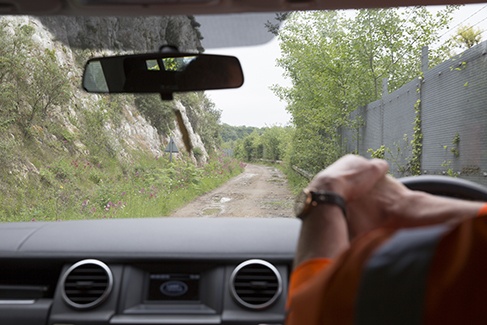
Getting to the site is a rocky ride
Part of the EDC’s plan to get round this is to use an official benchmarking standard to award to homes that meet the standards it sets for Ebbsfleet’s garden city. It may also use its investment powers to buy up land to develop or commission homes itself.
This ties into the development of affordable housing in the city. Most sites have their own section 106 agreements in place, with an average of about 30% affordable housing being mandated. But where the EDC feels this doesn’t meet the full range of needs it might step in.
“We look at what we get through planning and who is being provided for through the normal means,” says Mr Harrison. “If there are gaps we might try to fill them and see what we can do in terms of products, and we could develop our own products to fill those gaps. We can buy land in the normal way - or we can explore joint ventures and partnerships.”
He says the EDC is open to Starter Homes, which are sold at 20% of market values. It may even bid for funding, but would be reluctant to see too many imposed.
“We are concerned about how we get teachers in to live here, because with Starter Homes they will not necessarily be able to afford that - so the question is can we develop our own product to sit alongside that,” he says.
Public sector ties
To deliver this affordable housing, the EDC is keen for housing associations to get involved in Ebbsfleet. Circle has been named as the preferred partner for affordable housing in the Eastern Quarry, and is onsite building a 125-home scheme - 52 for affordable rent and 73 for shared ownership. It will build 375 homes on the site over six years.
“To get this place to work you need patient investors, so we don’t really want that traditional house builder model,” Mr Harrison says. “There is a lot of really good housing associations that would take that long-term view.”
The locals in nearby Northfleet seem happy enough about the giant changes planned on their doorstep.
“I’ve lived here my whole life and I have seen it go down and now hopefully it’s on an upward swing again,” says Gary May, director of a local gardening charity that supports long-term homeless people and addicts, and which has received support from the EDC.
He looks down from a walkway - recently cleared by his charity - into an old chalk pit where local teenagers used to speed around on quad bikes. The EDC has it earmarked for new business space and hopes science and research companies will base there over the next 10 years. Does he worry the existing community might be frozen out?
“That’s what we are really conscious of and don’t want to see happen,” he says. “We’re trying to get a rising tide lifts all boats sort of thing.”
Progress towards this is certainly being made - but there is a bumpy road still to travel to get there.
Ebbsfleet development timeline
2002
Outline planning permission for homes granted by Gravesham and Dartford Council
2007
First residential development started at Springhead Quarter in Gravesham
2008
High Speed 1 opens, but the credit crunch stalls development plans
2014
George Osborne announces garden city plans for Ebbsfleet
2015
The Ebbsfleet Development Corporation (EDC) is formed, and £310m of funding granted
2016
EDC board signs off plan to build 1,000 homes per year, as developers return to the site
